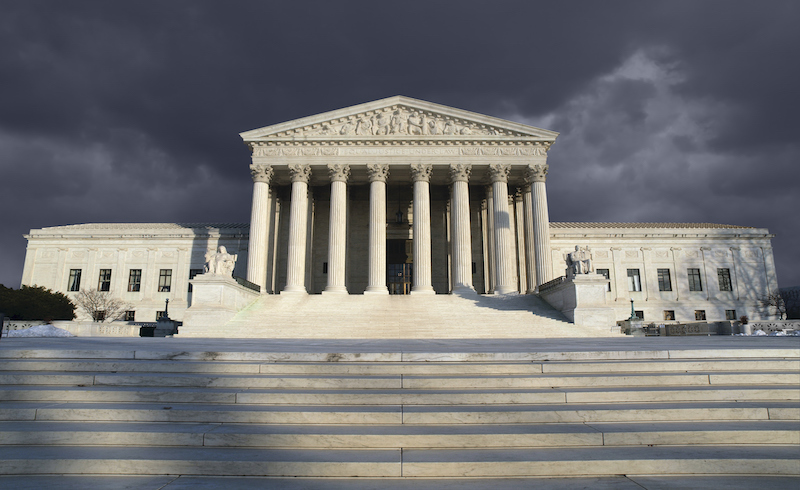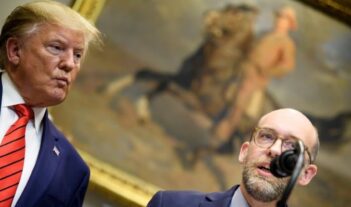
Several of the Supreme Court’s recent decisions bolster agency power to alleviate regulatory obligations.
Much has been made about how to characterize the U.S. Supreme Court’s recently finished October 2020 term. Some observers have suggested it was a relatively quiet term, especially compared to the series of heavily anticipated cases the Court will decide next year. Other commentators have highlighted potentially important decisions, such as Brnovich v. Democratic National Committee and TransUnion v. Ramirez, that could fundamentally reshape the law, depending on how they are fleshed out in future litigation.
Less acknowledged is that the term was exceptional in a different sense: it involved questions about the role of exceptions to otherwise applicable regulatory law. Recognizing the importance of these exceptions—which are part of a larger phenomenon that we call “unrules” in a recent article in the Stanford Law Review—shows that several of the Court’s seemingly narrow decisions this term take on greater significance than they might at first appear.
The Court’s decisions in HollyFrontier Cheyenne Refining v. Renewable Fuels Association and California v. Texas, for example, serve to reinforce a bias in the law that gives administrative agencies relatively greater discretion when they alleviate legal obligations than when they impose them. And the decision in Fulton v. City of Philadelphia, widely viewed as a narrow, appears actually to hold sweeping implications.
At issue in Fulton was whether the City of Philadelphia could require a Catholic diocese that ran a foster service to certify same-sex married couples as foster parents despite the Catholic diocese’s religious beliefs. Both the lead-up to the Court’s decision and the aftermath focused on whether the Court would overturn its foundational Free Exercise Clause precedent, Employment Division v. Smith. The Court’s failure to do that has led many commentators to conclude that Fulton was a quite limited decision.
On the contrary, the decision has major implications for a wide swath of regulatory laws that may well no longer be considered “generally applicable”—and therefore no longer entitled to a presumption of validity in the face of Free Exercise challenges—simply because they contemplate the possibility of exemptions or waivers. As we show in our article, such unrule provisions are ubiquitous in the law, appearing once for about every six regulatory requirements throughout the U.S. Code and the Code of Federal Regulations. Fulton raises the question of whether the omnipresence of unrules will ultimately lead to a de facto overturning of Smith and thus a gaping hole in the enforceability of a wide swath of regulatory law.
To take another seemingly narrow decision, HollyFrontier stemmed from the U.S. Environmental Protection Agency’s (EPA) controversial use of small-refinery waivers from the requirements of the agency’s Renewable Fuel Program. EPA argued that it had the statutory authority to grant waivers even after a period in which a previously granted waiver had lapsed. But the challengers argued that the statutory language authorizing the waivers conditioned the agency’s waiver authority on a continuous application of a waiver, thereby disqualifying a refinery from receiving a new waiver after a period in which an old waiver had expired. In a 6-3 decision driven by differing views as to the “plain meaning” of the statutory text and the term “extension,” the Court held that the agency had the authority to grant new waivers even after old ones had expired.
Much of the discussion following the Court’s decision in HollyFrontier has centered on what the decision portends for Chevron, as both the majority and the dissent seemingly ignored its deference principle. But viewing this case through the lens of unrules shows that, at least in one important respect, the Court followed a more general jurisprudential trend that we have revealed in our research: courts often permit agencies much greater discretion when it comes to alleviating regulatory obligations than when it comes to imposing them.
Finally, in California v. Texas, the latest case challenging the constitutionality of the Affordable Care Act (ACA), the Court also demonstrated another way that unrules are more likely to avoid scrutiny from the courts, by limiting access to judicial review more when government alleviates obligations than when it imposes obligations.
At issue in the California case was the U.S. Congress’s decision in 2017 to “zero out” the penalty for noncompliance with the individual mandate portion of the law. Texas and the other plaintiffs argued that the Court’s prior decision in National Federation of Independent Businesses v. Sebelius, which upheld the mandate as an exercise of Congress’s taxing power, combined with the eradication of any monetary penalty, meant that the mandate could no longer be justified as an exercise of the taxing power. As a result, Texas argued that not only was the mandate unconstitutional, but also the entire ACA was invalid.
The Court rejected this challenge on the grounds that Texas lacked standing to bring the lawsuit because it could not demonstrate any injury or identify any judicial redress. On the Court’s theory, Congress’s decision to eliminate the penalty—thereby alleviating the obligation to obey the law—meant that no one could be harmed by the individual mandate in a manner sufficient to meet standing doctrine’s injury-in-fact test. In this way, California v. Texas provided a clear illustration of how standing doctrine makes it harder for members of the public to seek judicial review of agency actions that alleviate obligations. It buttresses the observation from our study that “courts have in recent years become more reluctant to grant standing to organizations seeking to challenge agency actions that eliminate or lessen regulatory obligations.”
HollyFrontier also revealed all too well that the asymmetrical oversight of unrules is alive and well in the Supreme Court. The Court confronted two strong textual interpretations of EPA’s waiver authority: one that gave the agency greater discretion, the other less. The Court chose the option of greater discretion, which is consistent with courts’ more general tendency to treat agencies with a lighter touch when it comes to unrules––despite their tendency to view more skeptically agency discretion to impose regulatory obligations. Had HollyFrontier posed the same kind of textual question but over EPA’s authority to impose regulatory obligations, would this Court have chosen the option that gave EPA greater discretion? We cannot know for sure, but history suggests the likely answer is “no.”
The ubiquity of unrules combined with relative laxity in the legal constraints on agencies’ authority to issue exceptions should be a source of concern for judges, scholars, and even the public. Agencies’ “unregulatory” power can be, at times, just as consequential as their regulatory power. Both powers can be applied judiciously to promote genuine public value. But both can be deployed injudiciously too.
When unrules are abused, they can undermine the important societal protections afforded by the law—even providing a source of “unregulatory capture.” It should not be overlooked, in this regard, that the litigation in HollyFrontier emerged only after EPA had initiated what seemed to be a waiver spree under its renewable fuel program during the Trump Administration, a spree that reportedly allowed powerful industry players and President Donald J. Trump allies such as Carl Icahn to avoid paying millions of dollars to comply with otherwise applicable fuel blending requirements.
And after Fulton, we now have reason to worry that the courts will start to engage in their own similar spree by forcing the government to grant exceptions whenever confronted with purported religious objections to the law.
Looking back at the Supreme Court’s just-completed term, then, perhaps at first glance it might not seem to have been one of the Court’s most blockbuster years. But recognizing the role of unrules suggests that perhaps it actually was. Deciding whether this was an exceptional term may well depend in large part on how much attention one pays to exceptions.
This essay is an adapted and expanded version of an earlier essay by the authors that appeared in Yale Journal on Regulation’s Notice & Comment.
This essay is part of a nine-part series, entitled The Supreme Court’s 2020-2021 Regulatory Term.






